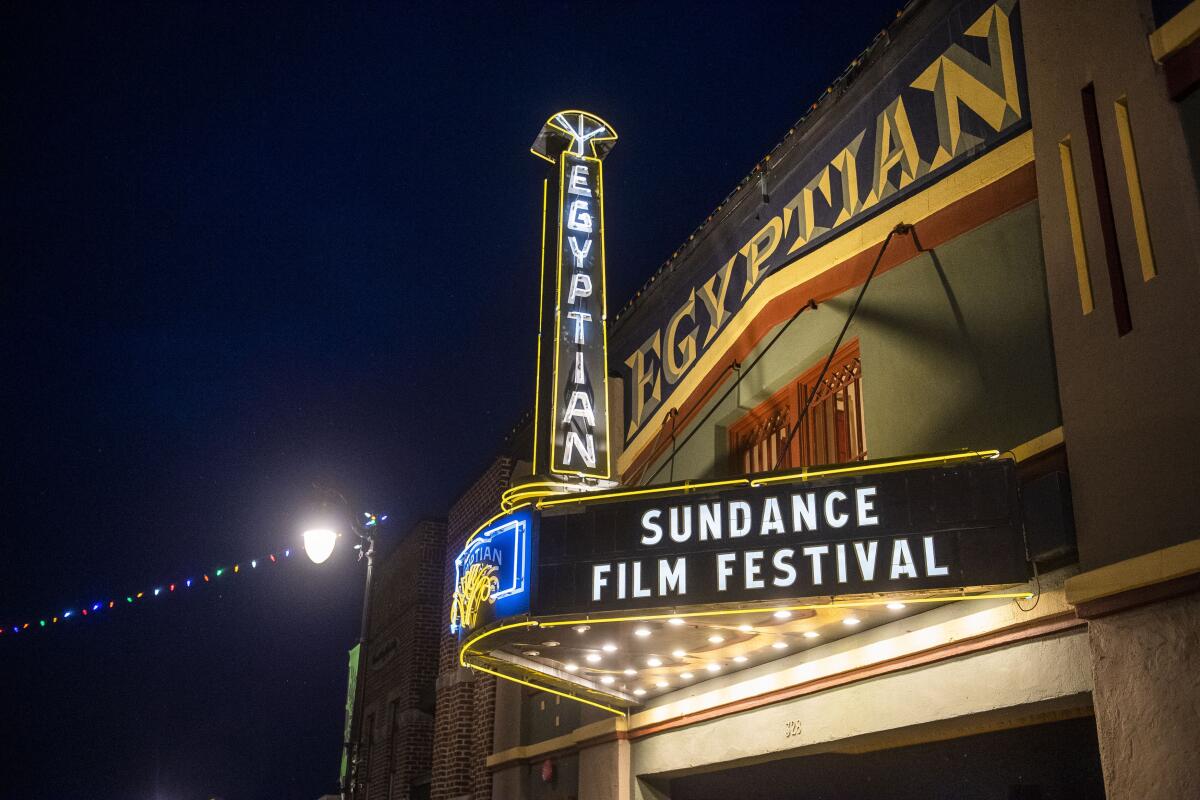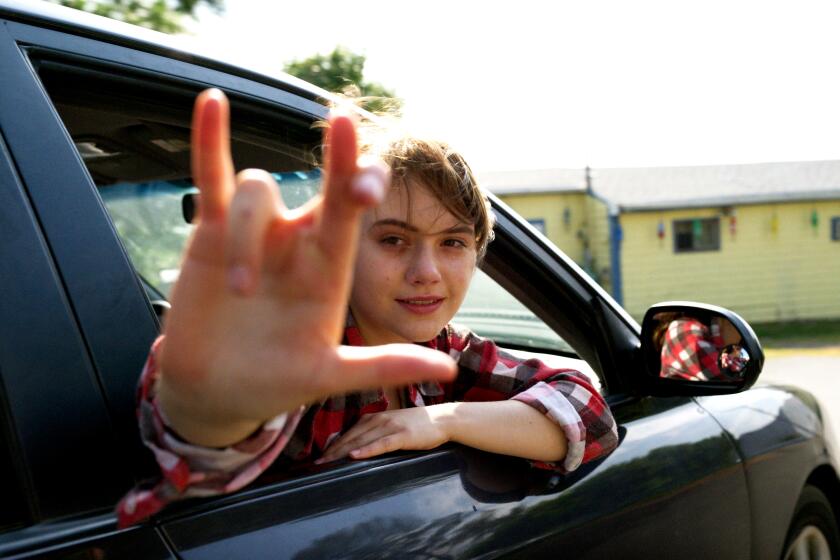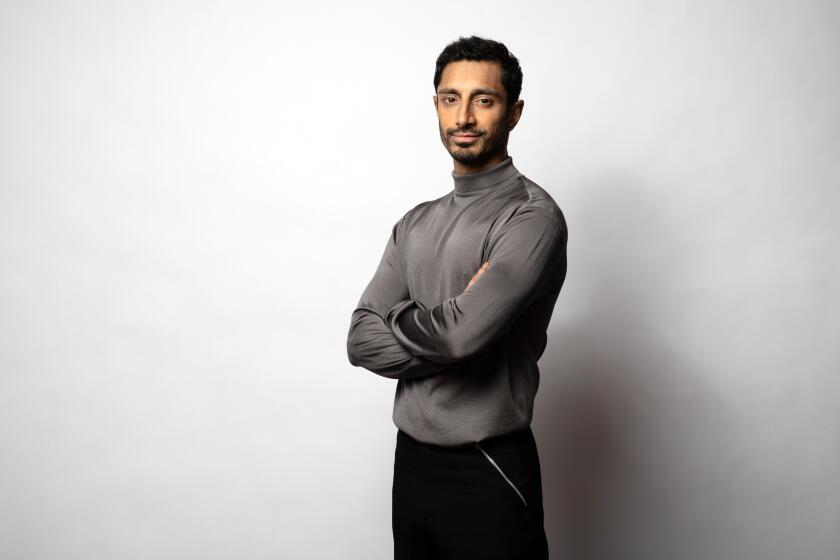Op-Ed: As a Muslim filmmaker, I want to tell my own story

- Share via
As a Muslim American filmmaker, I’ve found that how I am seen — not how I see myself — has dictated whether I get to tell my stories. How my diverse community is seen has dictated what stories about us get told. It’s exasperating.
From books to films, there are frames that box us in. We are often portrayed as either villains or victims. At worst, we are condemned as monsters; at best, we are objects of pity in stories that attempt to “humanize” us. We so rarely get to tell our stories from our own lens.
The latest example of this came last month, with the premiere of the controversial film “Jihad Rehab” at the Sundance Film Festival. The documentary follows Yemeni men, formerly detained but never charged at Guantanamo Bay, who are sent to a “rehabilitation center” in Saudi Arabia to be “deradicalized.”
Indie film is in big trouble at the box office. One financier says streaming is the only business that makes any sense for independent movies.
The director, a white American woman, says she approached the film from an informed perspective, since she spent time in Yemen. But a chorus of filmmakers have widely criticized the movie and human rights activists have raised ethical concerns. In a review, Filmmaker Magazine called it “unapologetically anti-Muslim jingoism.” Meanwhile, two senior staffers at the Sundance Institute reportedly resigned because of the decision to include the film at the festival.
The film hits on two problematic narrative frames that plague storytelling of Muslims and people from the Middle East and North Africa. First, there’s the “war on terror.” We seemingly cannot be viewed outside of notions of terrorism and violence. Last year, a USC Annenberg study of Muslim representation in 200 popular films found that roughly one-third of Muslim characters depicted are perpetrators of violence, and more than half are targets of violence.
The second is the empathy frame. The Sundance synopsis claims that “Jihad Rehab” was made with empathy. But often, such “empathy” reinforces biases because it’s loaded with power dynamics about whose humanity is taken for granted and whose humanity needs to be proven. In an essay, novelist Namwali Serpell writes: “The empathy model of art can bleed too easily into the relishing of suffering by those who are safe from it.” It can be, she argues, “an emotional palliative that distracts us from real inequities, on the page and on screen.”
Nearly 10 years ago I started making my first film, “The Feeling of Being Watched,” a documentary about the decades of FBI surveillance of my Muslim and Arab American neighborhood in suburban Chicago. One afternoon while filming, a friend and colleague who was an established white male filmmaker told me that every good documentary film ought to answer a yes-or-no question. For me, he said, the question was: “Are you all terrorists?” He suggested that I spend the duration of my film proving the answer to be no. This was a wake-up call for me. I was investigating my community’s victimization by the state and their resilience from it. Yet cornered into the terrorism framework, his ultimatum would’ve burdened me with having to prove that my family and community aren’t guilty.
While making the film — from the pitching and fundraising phases to the distribution phase — I constantly found myself confronted with the presumption of guilt. As a Muslim filmmaker, I felt doubly compelled to prove my own innocence, while also asserting that I could tell my own story and that my perspective was legitimate. At one film festival pitch, a white woman who’s an industry gatekeeper and heads a major North American documentary fund for “underrepresented” stories, sat across a table from me for a “speed date.” After hearing my pitch, she bluntly told me that I couldn’t possibly take on the task of directing this film myself, since it was a personal film and I’m in it. She recommended a list of white female directors for me to bring on as a co-director. (I doubt anyone ever presumed to tell French New Wave filmmaker Agnès Varda, for instance, that she couldn’t both direct a film and be in it.)
Hollywood has largely erased Muslims from our screens, but when they appear the same violent tropes are used. Riz Ahmed wants to change that.
Months later, when I applied to the fund, the gatekeeper’s assistant sent me an email saying that I was a finalist for the grant. The gatekeeper wanted to know if I’d followed her guidance to hire on one of her recommended co-directors. I replied no. I didn’t receive the grant.
Ultimately, we’re depriving American audiences of a range of stories from varied views. They’re missing out on so much. Gatekeepers must consider how they perpetuate harm by ignoring their biases, as well as the Islamophobic frameworks through which they see us and our stories. It’s time for the industry that has invested so much talk to “diversity and inclusion” to speak with their actions.
After the controversy at Sundance, a Twitter hashtag took off: #MyMuslimFilm. Many filmmakers, including Black Muslim women, queer South Asian men and Arab Christians, shared an incredible array of stories they’ve directed — from “Comin’ up Short,” a feature-length documentary set in South L.A. that follows Shorty (Jerome Muhammad), a member of Ice Cube’s platinum recording group Da Lench Mob, to “The Syed Family Xmas Eve Game Night,” a short comedy about a queer woman who brings her partner home to meet her family for the first time.
Despite the many ways we have been marginalized within the film industry, Muslim and Middle Eastern filmmakers will continue to tell our stories — stories where our humanity is assumed, not a subject of debate.
Assia Boundaoui is an Algerian-American filmmaker, a recipient of a 2022 United States Artists award and a fellow at the MIT Open Documentary Lab, where she is co-creating a new-media installation called the Inverse Surveillance Project.
More to Read
A cure for the common opinion
Get thought-provoking perspectives with our weekly newsletter.
You may occasionally receive promotional content from the Los Angeles Times.












